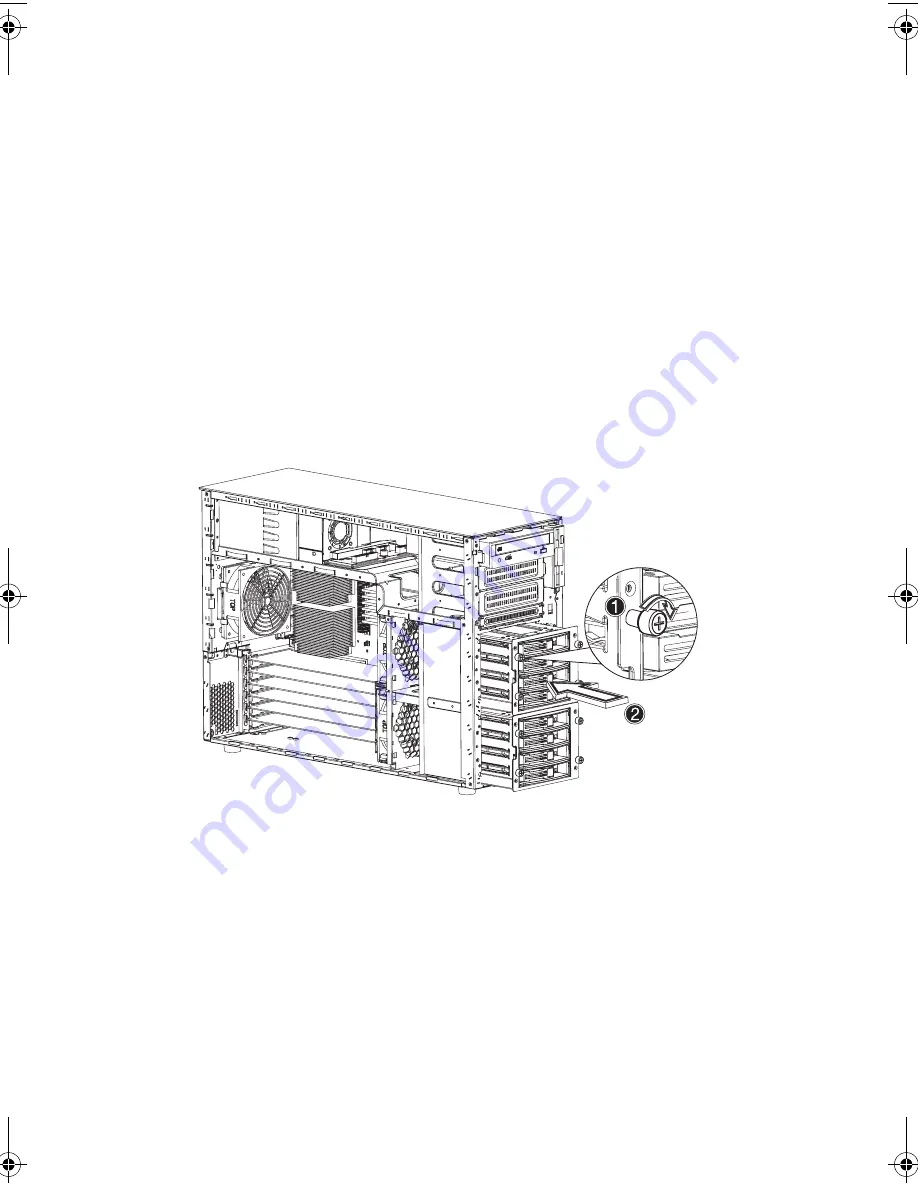
3 Upgrading the system
40
Installing the hot-swappable cage
1
Detach the chassis panels and remove the air baffle.
2
Connect the following cables to the SCSI backplane board:
a
SCSI cable
b
SCSI drive power cable
c
SCSI drive fault LED cable
3
Attach the other end of these cables to the corresponding
connectors on the mainboard.
Refer to “Mainboard layout” on page 10 for the location of the
connectors.
4
Insert the hot-swappable cage into the housing
(2)
, then tighten
the four thumbscrews to secure it to the chassis
(1)
.
5
Reinstall the air baffle and the chassis panels.
AA G701 - EN.book Page 40 Monday, March 17, 2003 4:24 PM
Summary of Contents for Altos G700 series
Page 1: ...Acer Altos G700 series User s guide Model G701 ...
Page 10: ...x ...
Page 11: ...1 System tour ...
Page 25: ...2 System setup ...
Page 39: ...3 Upgrading the system ...
Page 67: ...4 BIOS setup ...
Page 74: ...4 BIOS setup 64 System Information ...
Page 75: ...65 Total Memory ...
Page 102: ...4 BIOS setup 92 ...
Page 103: ...Appendix A ASM RDM quick installation guide ...
Page 104: ...This appendix shows you how to install the ASM and RDM software package ...
Page 110: ...Appendix A ASM RDM quick installation guide 100 ...
Page 111: ...Appendix B Rack installation guide ...
Page 112: ...This appendix shows you how to install the ASM and RDM software package ...
















































